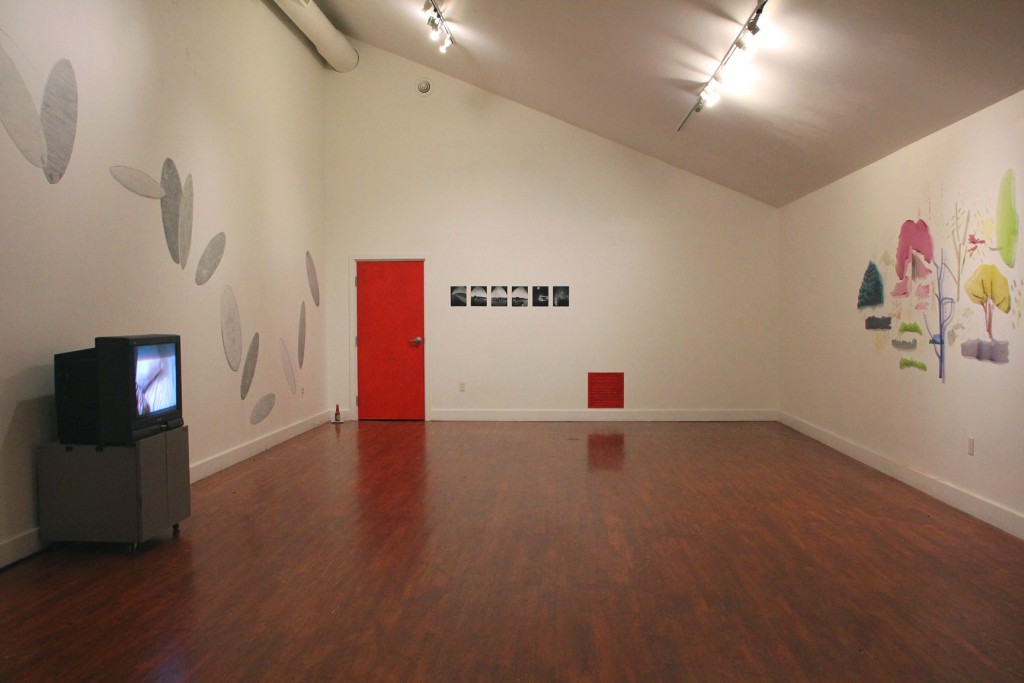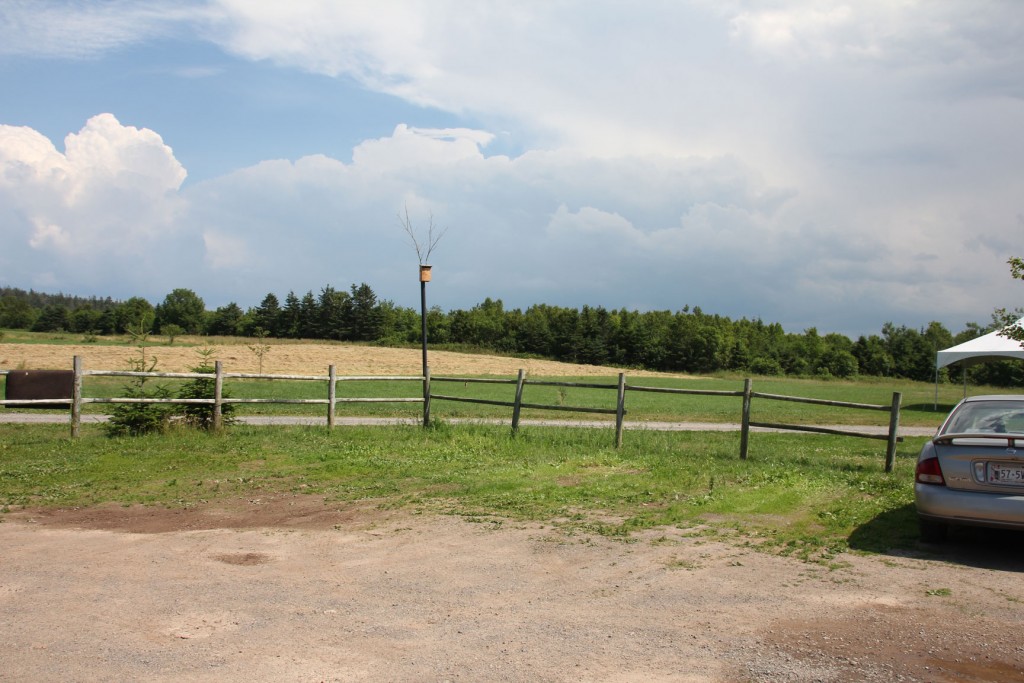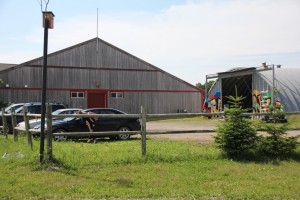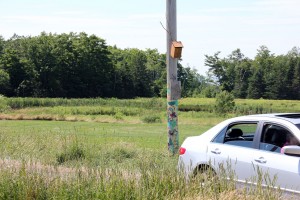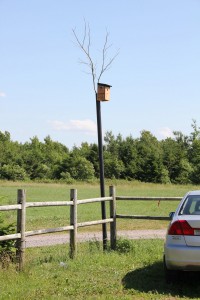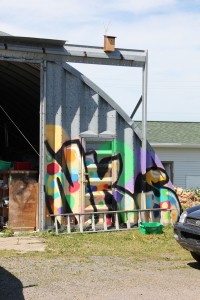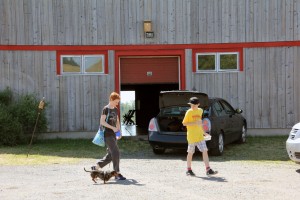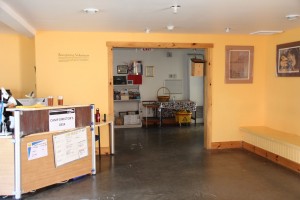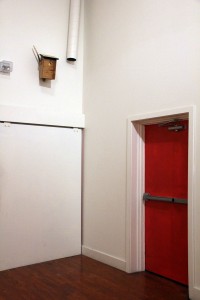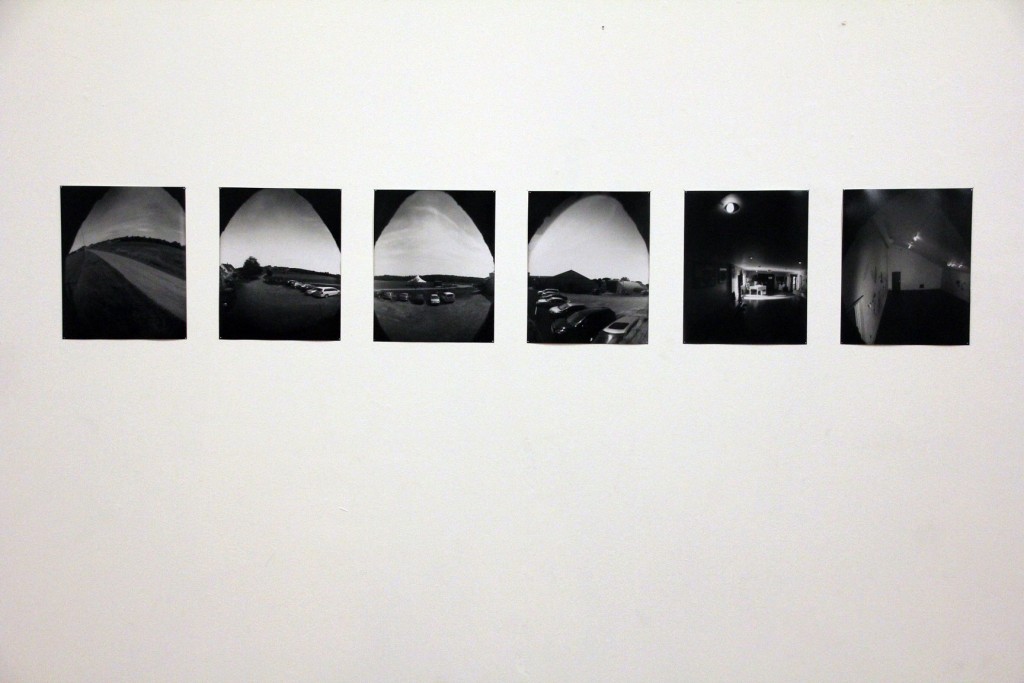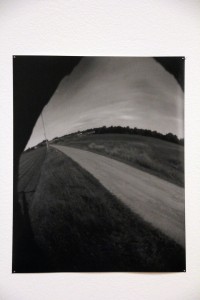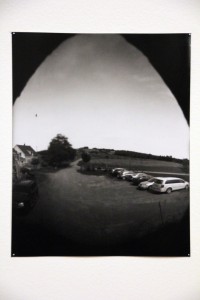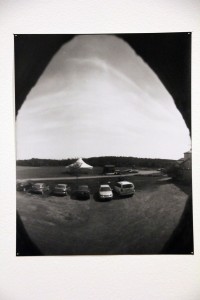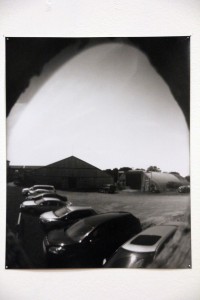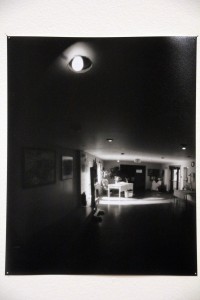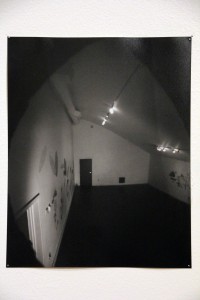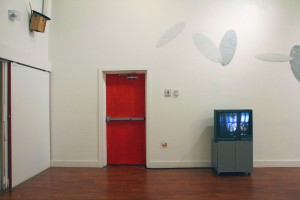Seen above is an installation along with work by Sara Hartland-Rowe and Michael Fernandes (who invited me).
Works:
Timeshares
2016
6 standard tree swallow birdhouses, pinhole photography, installation
Experience a place like you live there (cleaning an Airbnb)
2015-2016
video (12’51”)
Statement
The next morning the artist Michael Fernandes reported to me on the noises assaulting his cabin. He swore there were two gangs of swallows engaged in a nightlong fight over territory, which overflowed into the airspace over his bed, as well as what sounded like a woodpecker and even a squirrel making claims on the eaves and the metal roof. Other campers filed similar reports and staff brought a ladder over to try to free some of the birds (garden variety starlings) to the wide open, harsh world.We all come from somewhere. We are squatting in someone else’s cabin.
We all come with something. Despite this residency project’s premise of call and response, I came with a desire to try my hand at pinhole photography. In no way intended as a solution to the real estate crunch, I decided to build a series of birdhouses of standard design. What is a birdhouse but a camera? The prolific local artist David Taylor’s work pointed out to me the possibilities of this vernacular object: his weathered grandfathers hanging watchfully over Canning wait readily to swallow and regurgitate feathered creatures as if harbouring a cult of informants. My birdhouses would be converted and used first as pinhole cameras, then, after my time at Ross Creek, turned over to the birds.
The video presented alongside incorporates footage from a job I held occasionally last year, cleaning a friend’s Airbnb apartment in Montreal. The audio is derived from the aforementioned cabins at Ross Creek Arts Centre. While sitting with Michael Fernandes in the Centreville Kwik Way, where we were assessing french fry quality and appreciating the hamburger paintings, we caught part of a program being screened on their plasma screens. The National Geographic channel was playing, an excited zoologist was explaining her latest discovery. In the Amazonian jungle, a new species of bear had been identified. The most interesting trait (she called it “revolutionary”) was not the secretive bear’s appearance, which was sort of small and thin and blackish, nothing to write home about, but the bear’s habits of collecting and distributing its quarry and other materials. This is where, in my opinion, the scientist seemed to get ahead of herself. She called this the bear’s “economic activity.” What shocked the team of experts was the bear’s practice of remitting portions of what it had confiscated back to producers, including bees and termites, but even more so its exchanging portions with other species—always for a profit. Of course, there was no way to prove the bears were consciously calculating in such a system, but this zoologist and her team found reasonable ground to assert this as the first evidence of a truly capitalist tendency in nature. And the cherry on top, which filled the narrator’s voice with audible glee, was that this was great for the jungle’s ecology. The ecosystem was healthiest and most abundant wherever this bear was active. “In order to advance into the perma-green economy,” the zoologist postulated, her eyes gleaming intensely in a close-up, “we must learn from the capitalist bear.” Michael and I thought the fry portion was still a little on the skimpy side for a “large.” Yet that day we left a single fry on the plate and drove back to Ross Creek in the generous rain.
Michael Eddy
